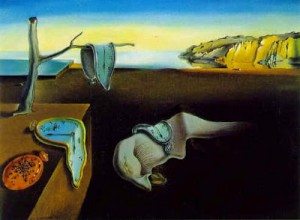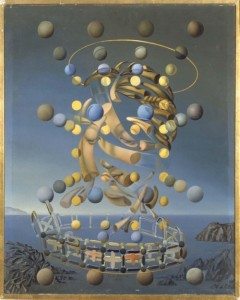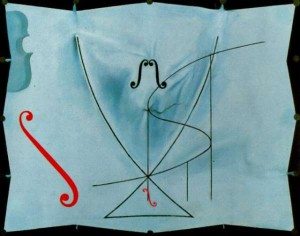It is my pleasure to introduce a new post of Teresa Vega about Salvador Dalí , a Spanish painter, draughtsman, illustrator, sculptor, writer and film maker. One of the most prolific artists of the 20th century, his fantastic imagery and flamboyant personality also made him one of the best known. His most significant artistic contribution was through his association with Surrealism.
 A few days ago, the amazing Dali Exhibition at the Reina Sofía Museum in Madrid finished, after attracting more than 730.000 visitors, making it the most visited art show in the history of our city.Fortunately The Reina Sofia permanent Collection continues displaying some of those works.
A few days ago, the amazing Dali Exhibition at the Reina Sofía Museum in Madrid finished, after attracting more than 730.000 visitors, making it the most visited art show in the history of our city.Fortunately The Reina Sofia permanent Collection continues displaying some of those works.
Teresa had the pleasure of guiding several groups through a treasure trove of sculptures, paintings, drawings, objects, films… and one of the many aspects that captured Teresa s interest is the link between art and science.
Dalí once defined himself as a carnivorous fish who swam with the same ease in the cold waters of art and the warm waters of science.
In his long and eventful life he met many prominent scientists, and befriended some of them. This long list includes mathematicians Matila Ghyka and René Thom, Nobel prize winners Ilya Prigogine, Severo Ochoa and James Watson… and the father of psicoanalysis, Sigmund Freud, whose method inspired his early work.
I would like to show you a few of the works exhibited where you will find an echo of some of the most groundbreaking discoveries of the 20th century:
The persistence of memory
 Visitors in Madrid were fascinated by this work from the MOMA, probably the most famous of all his paintings. “It’s tiny!”, I heard them exclaim. Dalí himself recounted in his memoirs the circumstances that led to its creation. He stayed at home one evening, while Gala went away with friends. They had been eating a Camembert, and in the summer heat he saw how the cheese began to slowly melt. But, of course, we can find a more profound meaning in the image of the “soft clocks”, as they are usually called: it illustrates the fluid and relative nature of time, which doesn´t exist as something absolute, independently from the subject that experiences it’s passage.
Visitors in Madrid were fascinated by this work from the MOMA, probably the most famous of all his paintings. “It’s tiny!”, I heard them exclaim. Dalí himself recounted in his memoirs the circumstances that led to its creation. He stayed at home one evening, while Gala went away with friends. They had been eating a Camembert, and in the summer heat he saw how the cheese began to slowly melt. But, of course, we can find a more profound meaning in the image of the “soft clocks”, as they are usually called: it illustrates the fluid and relative nature of time, which doesn´t exist as something absolute, independently from the subject that experiences it’s passage.
The máximum speed of Raphael’s Madonna
 Dalí used to compare the ADN molecule to his close union to his muse, Gala. The discovery of it’s structure by Watson, Crick and Wilkins in 1953 fascinated the genius, and there is an anecdote that illustrates the relationship he established with Watson. In 1965 the scientist paid a visit to the Saint Regis in New York, where the artist was staying, and sent him a note: “The second most brilliant person in the world would like to meet the most brilliant”. As you can imagine, Dalí was flattered, and they immediately became friends.
Dalí used to compare the ADN molecule to his close union to his muse, Gala. The discovery of it’s structure by Watson, Crick and Wilkins in 1953 fascinated the genius, and there is an anecdote that illustrates the relationship he established with Watson. In 1965 the scientist paid a visit to the Saint Regis in New York, where the artist was staying, and sent him a note: “The second most brilliant person in the world would like to meet the most brilliant”. As you can imagine, Dalí was flattered, and they immediately became friends.
Swallow’s tail

In 1983 Dalí painted this last picture. You can recognize a series of S shapes, that remind us of his famous moustache, but also of a violin and of the symbol of integrals in mathematics, as a homage to René Thom –the founder of the catastrophe theory-. When the painter died, some of the books he had by his bedside were The Geometry of Art and Life, by Ghyka, What is Life?, by Schrödinger, and A Brief History of Time, by Stephen Hawking…